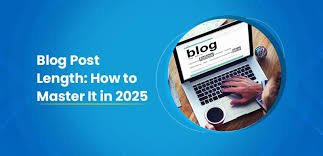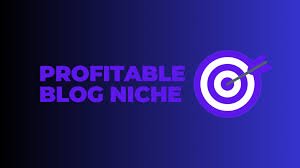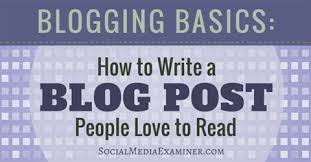Starting a blog can be an exciting and rewarding journey, whether you’re looking to share your thoughts, promote your business, or even make money. But before you dive into the world of blogging, it’s essential to understand the basics to set yourself up for success. In this beginner’s guide, we’ll walk you through everything you need to know to create a blog that stands out in 2025.
1. Why Start a Blog?
Before we jump into the nuts and bolts of blogging, let’s talk about why you might want to start a blog in the first place. There are countless reasons why blogging has become such a popular medium, especially in recent years:
- Personal Expression: If you have a passion, a hobby, or an interest, blogging gives you the platform to share it with the world.
- Business Promotion: Blogs can help you build credibility and establish your brand’s presence online.
- Monetization: Many bloggers make a living by monetizing their blogs through ads, affiliate marketing, and selling products or services.
No matter your motivation, blogging offers endless opportunities for personal and professional growth. Let’s dive into the steps to get started!
2. Choose the Right Blogging Platform
One of the first things you’ll need to do is choose a platform to host your blog. The right platform will depend on your goals, technical skills, and personal preferences. Here are a few popular options:
- WordPress.org: This is the most popular platform for serious bloggers and businesses. WordPress.org offers a lot of customization options and complete control over your website. However, it requires hosting, which may be challenging for beginners.
- WordPress.com: A more user-friendly option, this is perfect if you want a free blog and don’t need too much customization.
- Blogger: A simple and free option owned by Google. It’s great for beginners but has fewer features and customization options than WordPress.
- Medium: A platform focused on writing and publishing. It’s a good choice if you want to focus purely on content creation without worrying about design or technical issues.
For most beginners, WordPress.com is a good starting point because it’s easy to set up and use. But if you’re serious about blogging, investing in WordPress.org might be worthwhile in the long run.

3. Pick a Domain Name and Hosting Provider
If you want to have your blog’s own domain (e.g., www.yourblog.com), you’ll need to choose a domain name and hosting provider. Your domain name should be memorable, short, and relevant to the content of your blog.
When it comes to hosting, look for a provider that offers good performance, reliable customer support, and excellent security features. Some popular hosting providers include:
- Bluehost
- SiteGround
- HostGator
- WP Engine
Many hosting providers offer a free domain name for the first year when you sign up for hosting services, which can help you save on costs.
4. Create a Blog Design That Reflects Your Brand
Your blog’s design plays a crucial role in how visitors perceive your brand and whether they stick around. While you don’t need to be a professional designer, it’s important to ensure your blog looks clean, professional, and easy to navigate.
WordPress offers many free and premium themes that are mobile-responsive and customizable. When selecting a theme, keep the following in mind:
- Simplicity: A clutter-free design will make it easier for visitors to focus on your content.
- Mobile-friendly: Many users access blogs via mobile devices, so make sure your theme works well on smartphones and tablets.
- Fast-loading: A slow website can turn visitors away. Optimize your blog’s images and content to ensure it loads quickly.

5. Write Compelling Content
Content is king in the world of blogging. Your goal should be to provide value to your readers by offering informative, engaging, and well-written posts. Here are some tips for creating compelling content:
- Know Your Audience: Understand who you’re writing for and what they want to read. This will help you create posts that resonate with them.
- Use Headlines and Subheadings: Break up your content with headlines and subheadings to make it more readable. People tend to skim blog posts, so clear headings will help them find what they’re looking for.
- Incorporate Keywords: Do some keyword research and use relevant keywords in your posts to help your blog rank higher in search engines. But be careful not to overdo it—use keywords naturally within the content.
- Keep It Concise: Write in a clear, concise manner. While long-form content can be great for SEO, make sure you’re not rambling just to fill space.
6. Optimize for SEO
Search Engine Optimization (SEO) is a critical factor for getting your blog found on search engines like Google. By optimizing your content for SEO, you increase your chances of ranking higher and attracting organic traffic. Here are a few SEO tips:
- Use Keywords Strategically: Include keywords in your title, meta description, headings, and throughout the post.
- Write Engaging Meta Descriptions: Craft compelling meta descriptions for your blog posts to entice users to click on your content when it appears in search results.
- Use Internal and External Links: Linking to other posts on your blog (internal links) and credible sources (external links) helps improve your blog’s SEO.
- Optimize Your Images: Use descriptive file names and alt text for your images to boost SEO.

7. Promote Your Blog
Creating great content is only part of the equation. You need to promote your blog to attract readers. Here are some ways to do that:
- Share on Social Media: Promote your blog posts on platforms like Facebook, Twitter, Instagram, and LinkedIn.
- Engage in Blogging Communities: Join online forums and groups where bloggers and readers interact. Leave thoughtful comments on other blogs and participate in conversations.
- Email Marketing: Collect email subscribers and send them regular updates when you publish new posts. This is a great way to keep readers engaged and bring them back to your blog.
Conclusion
Starting a blog in 2025 is an exciting venture with endless possibilities. By following these blogging basics—choosing the right platform, creating engaging content, optimizing for SEO, and promoting your blog—you’re well on your way to building a successful blog. Remember, consistency and persistence are key. Keep learning, experimenting, and improving your blogging skills, and you’ll see success over time!
Related Tags:
- Blogging for Beginners
- How to Start a Blog
- Blogging Tips 2025
- Blogging Basics
- WordPress Tips
- SEO for Blogs
- Blog Monetization
- Content Creation
- Blogging Strategies
- Blog Promotion













